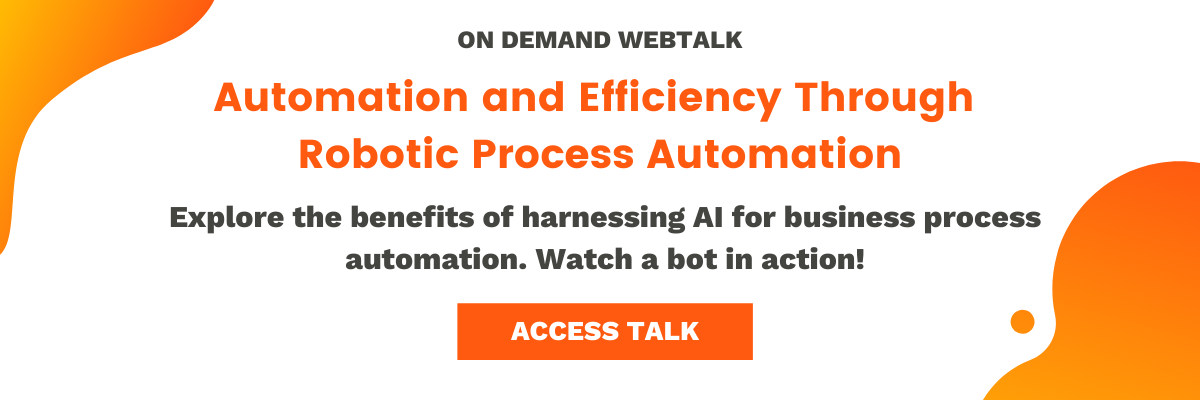Kickstart your Business’ AI Adoption with Design Sprints
Today, when asked about AI, perhaps a lot of people will still relate the term to robots and science fiction apocalyptic scenes. The reality is further from that concept, with artificial intelligence already being part of our daily lives, everywhere.
Artificial intelligence is a branch of computer science that makes it possible for machines to learn from human behavior and perform cognitive functions such as reasoning, interpretation, problem-solving, and learning from past experiences. Businesses of all shapes and sizes are now considering AI as a real solution to real business problems.
According to a recent survey by McKinsey Global, almost 50% of respondents said their organizations had implemented at least one AI capability into their business processes, while 30% answered that are already doing AI trials.
Artificial intelligence opportunities exist across every vertical and every business activity, but most companies are still in the early stages of adoption and continue learning how to introduce these technologies in their processes effectively. The real challenge resides in developing a strategy that allows tech leaders to validate AI usefulness and readiness before moving from experimentation and prototyping to full-scale adoption.
What Are AI Design Sprints?
The AI Design Sprint is the first step towards adopting and implementing AI technologies. This tool will allow you to assess the opportunity for deployment, define, and develop your own AI solution through the sprints and design thinking methodology. An AI Design Sprint is a four-phase process that uses design thinking to identify a business problem and find possible AI solutions quickly in just a matter of days. It is similar to a regular design sprint, but here we will be focusing on AI issues and solutions.
The tangible outcome of an AI Design Sprint is the AI solution developed for your business, which not only adds AI to legacy systems but centers them around AI for many benefits specific to each case.
-1.png)
What is Design Thinking?
Design thinking is an iterative process for creative problem solving with a human-centered core, emphasizing on practical solutions. In simpler words, it is a way to understand the end-users' needs in-depth before taking a solution-oriented and creative approach to fulfilling those needs. The main benefit of focusing on the end customer is building better products, services, and internal processes.
This approach is for more than just product and service creation; it can be applied to businesses’ processes and customer experiences to transform how they create value.
Design Thinking Steps
The Hasso-Plattner Institute of Design at Stanford, also known as d.school, proposes the next five-step model for Design Thinking:
-1.png?width=1200&name=Social%20Media%20June%202019%20(9)-1.png)
- Empathize: understanding the needs of those you’re designing for. How? By actively observing and engaging with the end-users to follow them on a psychological and emotional level. The idea is to set aside any assumptions and gather real insights.
- Define: determine the end-users’ needs and problems by questioning and analyzing the insights gathered in the previous stage.
- Ideate: now that the problem is defined, we must generate a lot of ideas for potential solutions. Brainstorming is one technique, but there are many others. And no judgment! All goes.
- Prototype: testing and experimenting those ideas with prototyping. A prototype is a smaller version of the digital product based on the potential solutions identified in the previous stages. These prototypes will help team accept, toss, discard, change, etc. all the answers suggested until choosing the one that best solves the problem at hand.
- Test: testing the solution with users. After this step, you may go back to some of the previous actions.
Note: design thinking is NOT a linear process. These 5 steps are not necessarily sequential. It is not required to follow a specific order, they may occur in parallel or repeat iteratively.
What Do I Need to Get Up and Running?
An ideal AI design sprint team should include:
- Sprint coach or moderator
- Product owner
- UI/UX designer
- Business experts / decision makers
- AI engineer
Day One - Discovery
The AI design sprint team gathers for an initial and structured conversation. Here, they map the problem to focus on, establish the strategy’s main goals, end-users, challenges, and sprint goal (one that can be solved within one week) with business requirements, expected outcomes, opportunities, and risks. How do you imagine AI could improve your internal processes? As a rule of thumb, processes more viable for AI implementations are the ones that are: repetitive, well documented, and data-driven.
Day Two - Storyboard & Decision
The second day, the team will sketch and storyboard as many possible AI solutions to tackle the problem in hand, and collectively decide the winning solution to focus on for the rest of the sprint, after the AI experts provide initial feedback based on the discovery phase. Here is where your team picks their brains for creative ways of using artificial intelligence.
Day Three - Design & Prototype
The third day is all about designing the most competing solution on paper to prototype the winning blueprint for an experiment with AI. If possible, keep the prototype simple with the minimum needed to test. The team should select the appropriate features and algorithms.
Day Four - Implementation & Validation
The final day of the sprint focuses on completing the design process and validating the prototype. Showing the prototype to decision-makers and stakeholders can help validate and obtain valuable feedback on what works and what can change to add more value. Depending on your business problem, your objective might be error reduction or increased customer delight.
You now have the AI solution most relevant for your business (at the moment) ready for development and implementation.
Final Thoughts
AI technology is not going anywhere, if any, it's only becoming more and more pervasive by the day. In some industries, smart machines will aid in expanding existing markets, and shifting the way revenue and profits are distributed among industry players.
The best defense is a good offense: companies must implement AI technologies now to position themselves to reap the benefits. AI Design Sprints are an exceptional tool to take a leap forward and start experimenting with artificial intelligence and possible solutions for your business. If you are interested in adopting AI technology and need some help getting started, iTexico’s AI Innovation Center is an ideal place to start, where the AI experts will be more than glad to coach you and your team for your first AI Design Sprint, and set you up for business innovation.







Post Your Comment Here